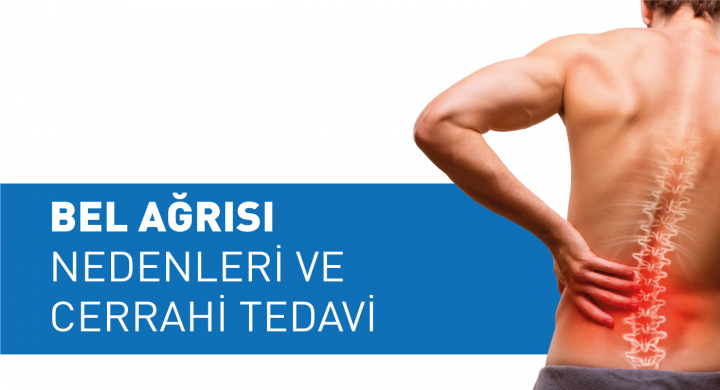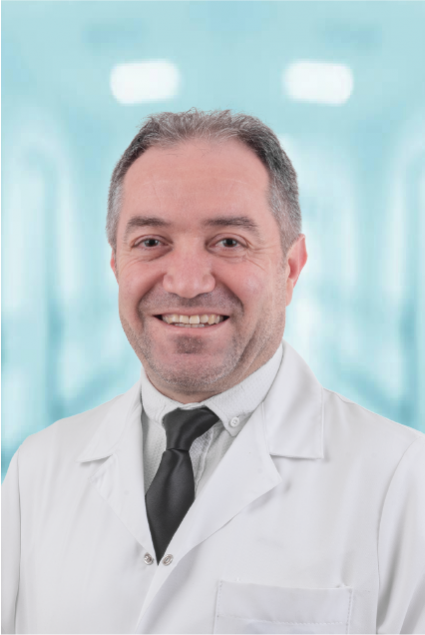Health Guide
Back Paın, Causes And Surgıcal Treatment

Back Paın, Causes And Surgıcal Treatment
Release Date: 02 09 2019
Writer: SURGEON M.D. Tuncer Göker
Back Paın, Causes And Surgıcal Treatment
Nowadays, 85 out of 100 people complain of low back pain. 80 percent of patients with low back pain recover spontaneously within 1 month.Lower back pain is very common. It usually develops due to overuse or a minor injury, but sometimes there may be no obvious cause. Lower back pain can also be a symptom of an underlying medical condition.It usually results from a problem with one or more parts of the lower back, such as:ligaments,muscles,nerves,the bony structures that make up the spine, called vertebral bodies or vertebrae.It can also be due to a problem with nearby organs, such as the kidneys.Only 50 percent of low back pain is a hernia. In 90 percent of all cases, the pain gets better without surgery.
Causes of Low Back Pain
Back pain that comes on suddenly and lasts no more than six weeks (acute) can be caused by a fall or heavy lifting. Back pain that lasts more than three months (chronic) is less common than acute pain.
Back pain often develops without a cause that your doctor can identify with a test or an imaging study.Conditions commonly linked to back pain include: Muscle or ligament strain,bulging or rupture disks, srthritis, skeletal irregularities,osteoporosis.
Preventing Lower Back Pain
You can reduce the chances that you experience lower back pain by making these positive lifestyle changes.
-
Eat healthfully so you keep your body weight within a healthy range.
-
Get regular exercise to keep your back muscles fit and flexible.
-
Avoid prolonged sitting.
-
When you do sit, maintain good posture.
-
Use proper techniques for lifting (lift with your legs rather than your back).
-
Avoid frequent bending and twisting. Especially avoid bending, twisting and lifting at the same time (like shoveling snow).
-
Avoid situations where your spine is vibrated for long periods of time.
-
Get enough sleep each day.
-
Stop smoking.
-
If you have depression and/or anxiety, visit with your health care clinician about ways to manage it.
Surgical procedures for back pain
Laminectomy
A laminectomy is a surgical procedure to remove parts of the vertebral bone known as the lamina, bone spurs or ligaments in the back to relieve pressure on the spinal nerves. It is minimally invasive requiring only small incisions to push aside the back muscles instead of cutting into them. Portions of the vertebra adjacent to the lamina are left undamaged. A laminectomy may cause the spine to become somewhat unstable and require a spinal fusion to be performed.
Foraminotomy
A foraminotomy is performed by the surgeon to cut away bone at the sides of the vertebrae to make space for the nerve roots exiting the spine. The distended space can relieve pressure on the nerves, helping to relieve any agonizing pain. A foraminotomy too can sometimes result in reducing the stability of the spine, and a spinal fusion may be performed at the same time to correct the problem with the spine.
Discectomy
The spinal disc that acts as a cushion to separate the vertebrae may be inflamed from a bulging or slipped disc, causing it to press on a spinal nerve and cause back pain. In a discectomy procedure, the surgeon removes all or part of the herniated lumbar disc material pressing on the nerve root or the spinal cord. A discectomy can be performed either through a large incision or even with a smaller incision using micro tools from outside, known as microdiscectomy. Microdiscectomy uses a special microscope to get a larger view of the disc and nerves and therefore requires only a smaller cut, which causes less tissue damage. A discectomy can often form part of a larger surgery involving laminectomy, foraminotomy, or spinal fusion.
Disc Replacement
In artificial disc replacement surgery, the surgeon removes a damaged spinal disc to insert an artificial disc between the vertebrae, which enables continued motion of the spine. This procedure is seen is seen as an alternative to spinal fusion because the recovery time for a disc replacement may be shorter in many people. Though there may be a small risk associated for artificial disc replacement surgery of the foreign artificial disc failing or dislodging.
Spinal fusion
Spinal fusion is one of the most common surgical options for back pain, where mechanical back pain cannot be treated with aggressive conservative treatment, exercise and strengthening physiotherapy for the spinal muscles and ligaments. In this procedure the surgeon joins spinal bones, known as vertebrae, together to restrict movement between the bones of the spine at a painful vertebral motion segment. This should reduce the pain from the affected joint. Lumbar spinal fusion surgery involves adding bone graft to a section of the spine to allow a biological response in the body causing the bone graft to grow between the vertebral sections to create a bone fusion. This fixed bone created through the fusion procedure replaces the mobile joint to prevent any motion between the painful joints and also limit the stretching of the spinal nerves. Spinal fusions can be anterior or posterior in location, and sometimes cages or screws are used to further support the fusion. Spinal fusion surgery may not just be limited to one motion disc but across several motion segments.
